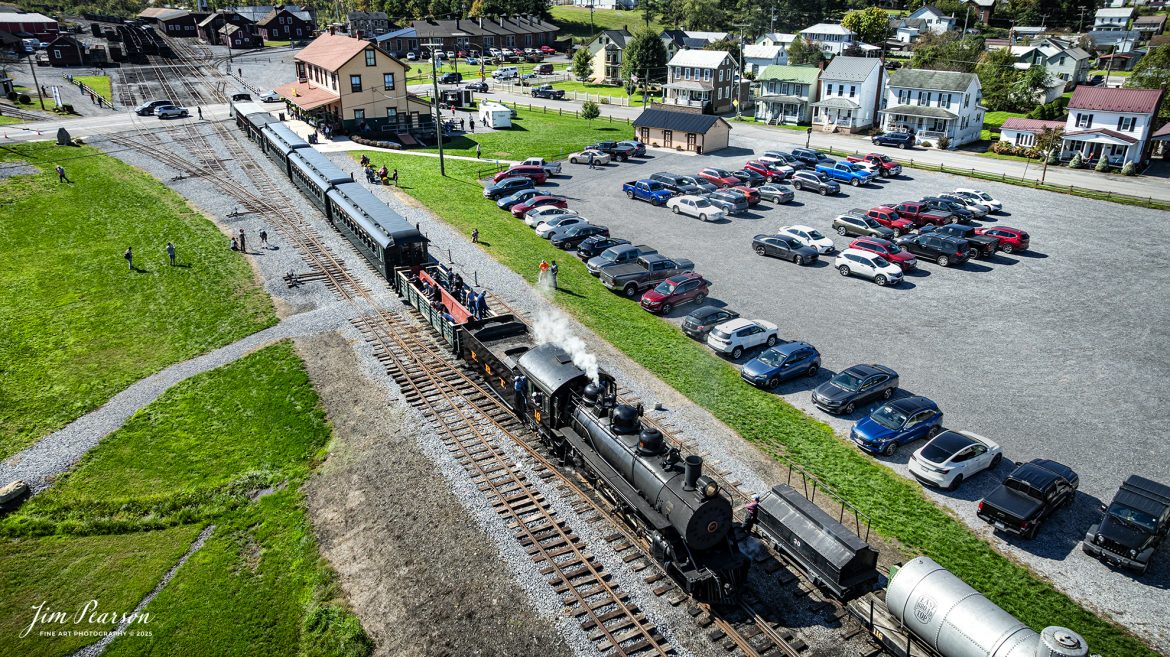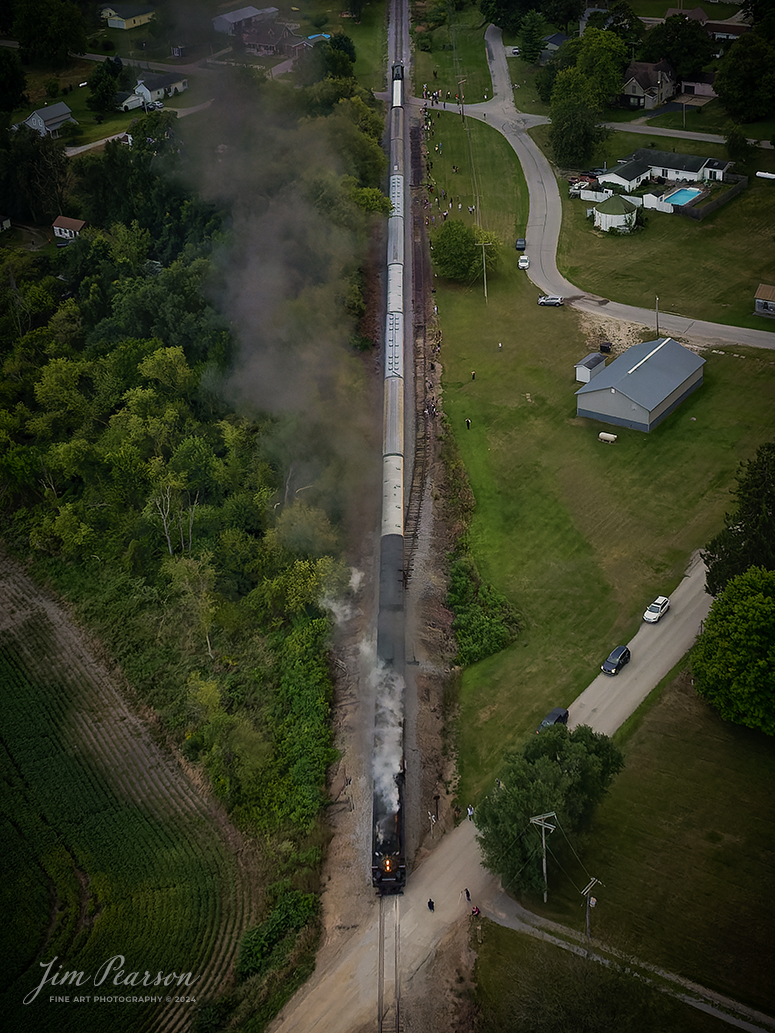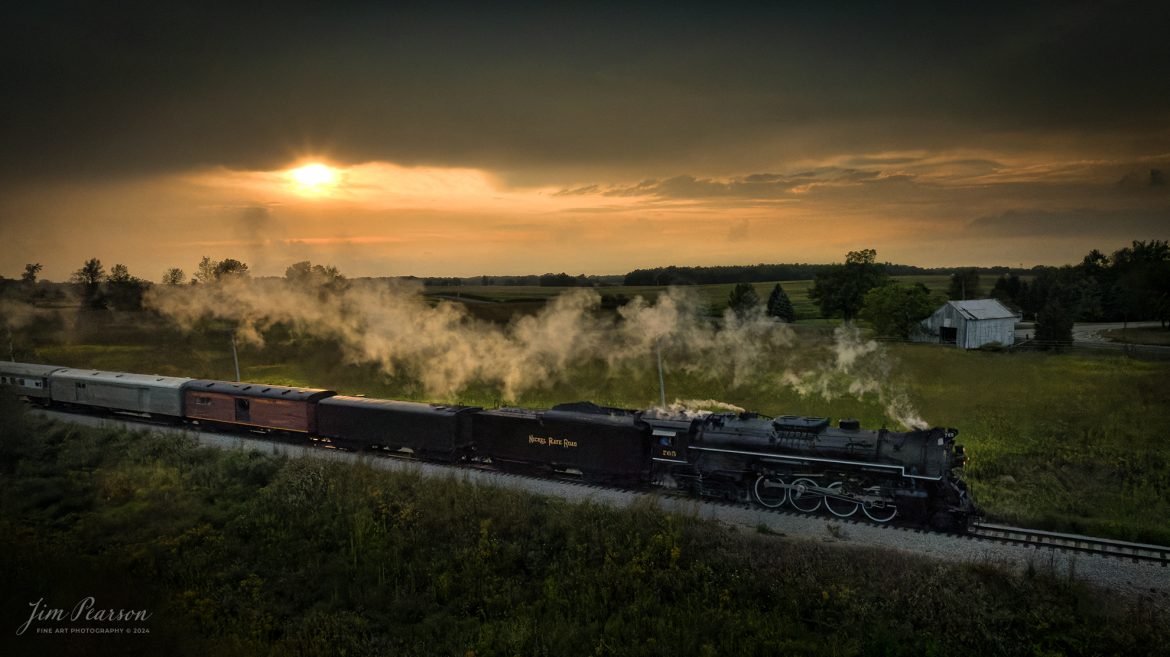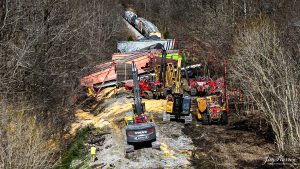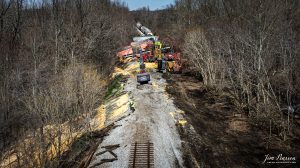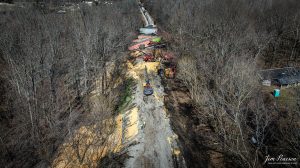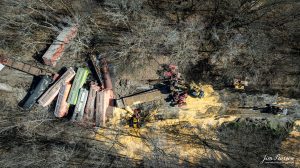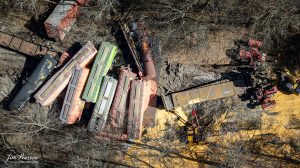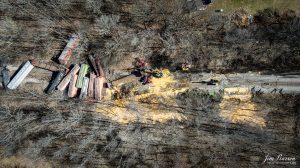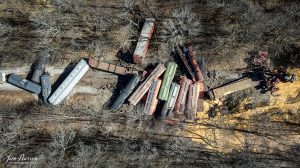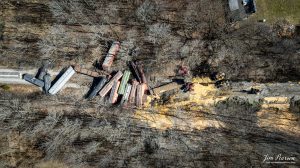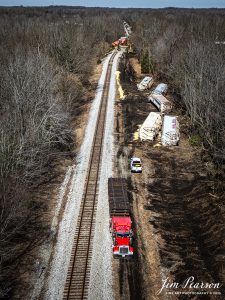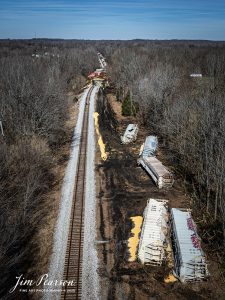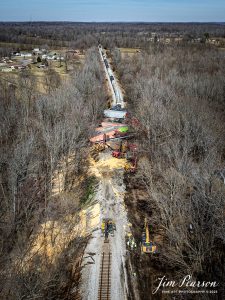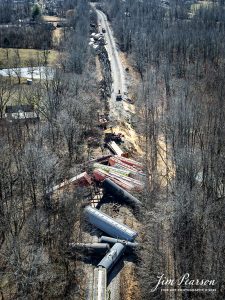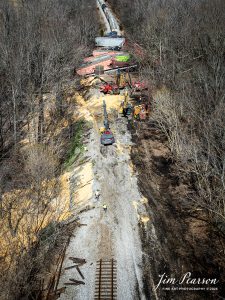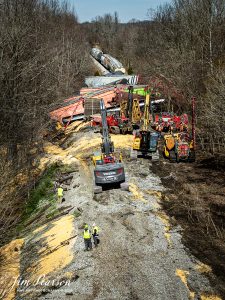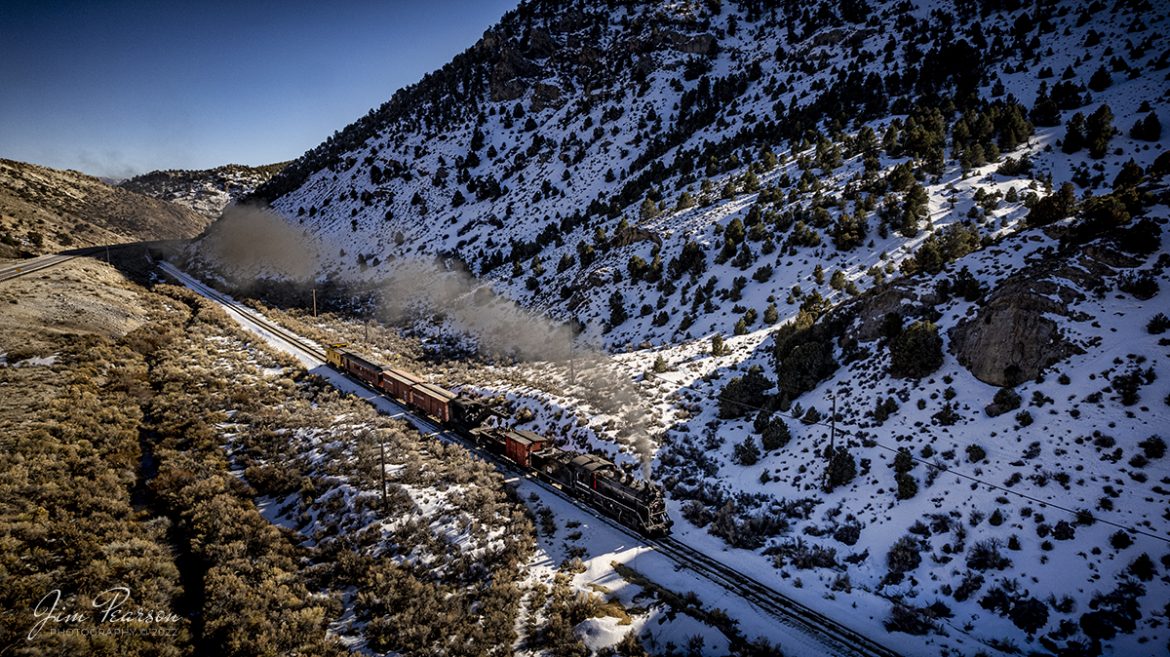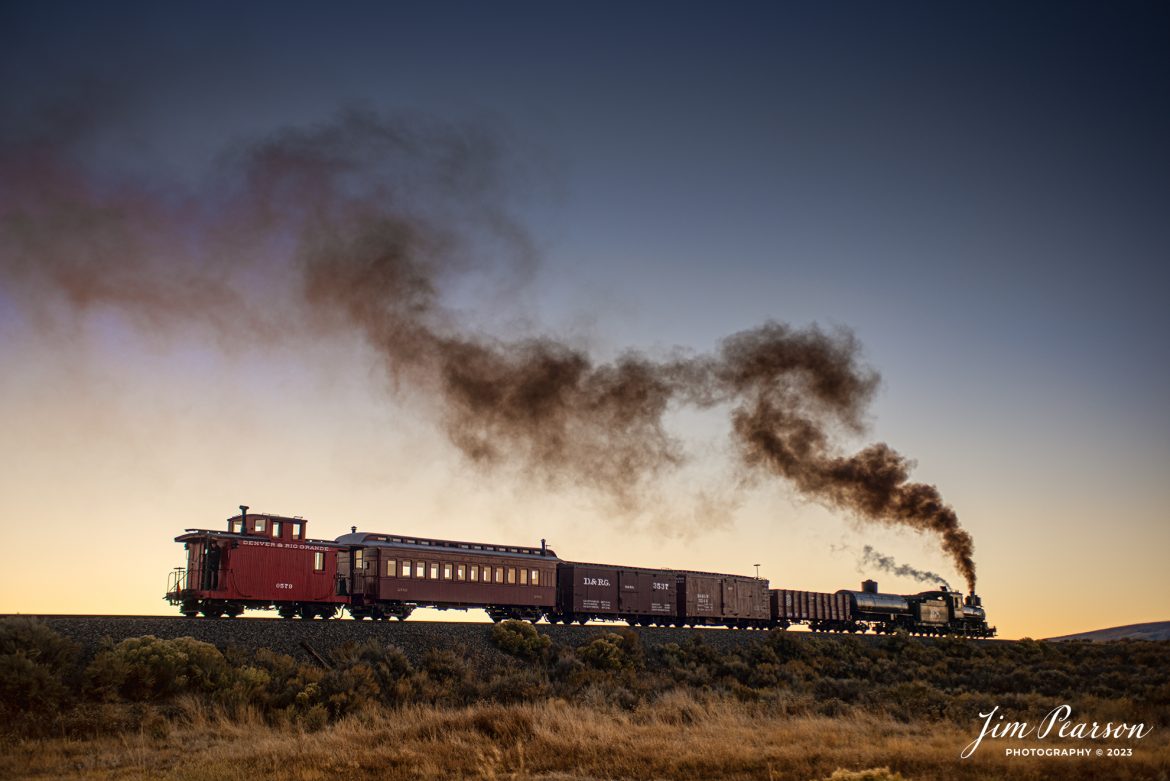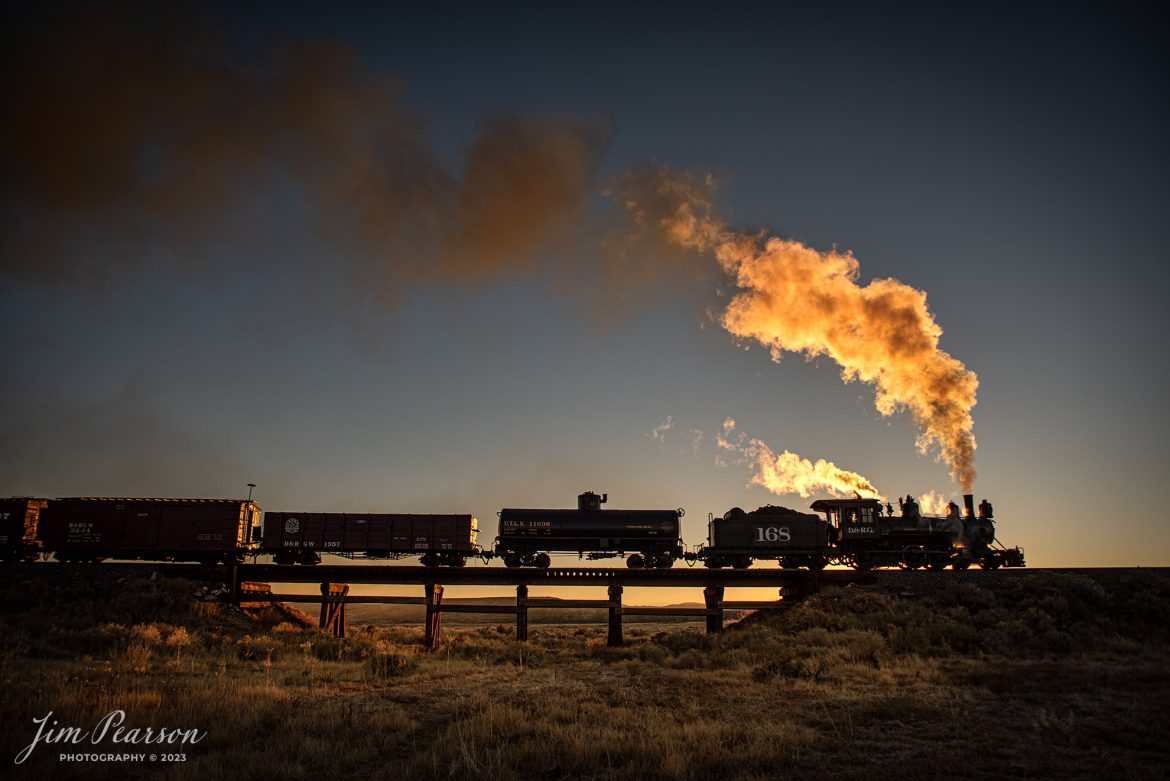East Broad Top (EBT) steam locomotive 16 leads a passenger train as they wait to depart from the depot at Rockhill Furnace, Pennsylvania, on October 6th, 2024.
According to the East Broad Top Website: Locomotive #16 was built in 1916 by the Baldwin Locomotive Works.
Entering the age of modern steam in 1916, the EBT received its first of three large Mikados. Unlike the previous three smaller locomotives, #16 came with superheaters, piston valves, and Southern valve gear. One story mentions #16 pulled 60 empty hoppers from Mt. Union to Rockhill in one train, literally clearing out the yard. #16 underwent an overhaul in 1955 and made only a handful of trips in early 1956 before the railroad shut down an overhaul when the EBT shut down. On February 1, 2023, the locomotive returned to service.
Tech Info: DJI Mavic 3 Classic Drone, RAW, 24mm, f/2.8, 1/1250, ISO 110.

